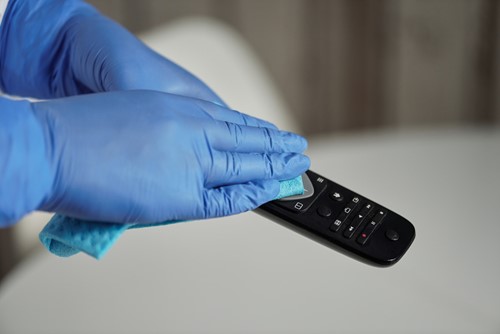
Disinfectants are an integral part of every home’s arsenal. Whether you opt for more traditional disinfectants or prefer less abrasive versions, there are a few key points to remember. Here are the basic dos and don’ts of two of the most common disinfectants.
Most homeowners, renters and residents know that bleach has a plethora of uses. What many don’t know is there are two types of bleach. Chlorine bleach is the most common and well-known. The other is oxygen bleach.
Chlorine bleach is an incredible disinfectant, eradicating most, if not all, pathogens and residues it comes into contact with. When using as a household cleaner, bleach should be diluted with water. The amount of bleach needed to clean or sanitize will depend on what you’re hoping to disinfect. However, the basic rule is to use one cup of bleach per gallon of water. Another key pointer is to use bleach on nonporous surfaces (tile, ceramic, some masonry, etc.) to avoid any lasting negative effects such as odor or material degeneration.
If you opt to use bleach as a cleaner, remember:
Do not mix bleach types.
Do not mix with other cleaners.
Wear protective eye and hand gear.
Only use in very well-ventilated areas.
Do not ingest bleach. If ingested, follow the instructions on the label, and contact poison control immediately.
Read the label carefully.
Many homeowners and renters alike have felt the sting of random stickiness. Often, it’s hard to get rid of and smears across walls and other surfaces. And like most residents, you’ve probably reached for some form of alcohol to clean it off with ease. But did you know that various other forms of that same phenomenal cleaner exist and can be used as a disinfectant?
Isopropyl alcohol is a very effective sanitizer and disinfectant. It is another of the more abrasive cleaners that should be used in a well-ventilated area. It’s normally is safe to use on most screens and certain electronics. If you’re going to mix a solution, be sure that your isopropyl content is at least 60% pure (or mostly pure - adjust for slight impurity) to make it effective against pathogens. Only mix it with water unless directed otherwise by the label. As with bleach, do not mix isopropyl alcohol with other cleaners, and always read the instructions and warnings. Be sure to wear protective coverings on the hands and over the eyes. If you’ll be using it en masse, be sure to wear a protective face covering.
If you’re simply using a solution of it to wipe the screen of a cell phone with a cotton ball, or using a quick spritz on your glasses, you’ll often only need to wash your hands thoroughly and wait for it to dry before using the object again.
Both cleaners are fantastic sanitizers and disinfectants when heavy cleaning is needed. As always, read the labels, do not ingest either, stay protected and in a well-ventilated area.

Robert J. Holbrook
Broker/Owner, Realtor™
Professional Designations: CLHMS, CRS, CMA, ALHS, GRI, CRLS, ABR, SRES, ePRO
Headquartered in Plano, Texas, Holbrook Realty serves families with their real estate needs in Texas (#538582), Oklahoma (#170585), Colorado (ER.100038767) and Washington (#27953). Robert Holbrook, the Broker at Holbrook Realty, is also a mortgage broker in Texas and Colorado (NMLS #305616, CO MLO100538188). This additional experience helps our customers navigate the home selling and buying process with confidence and ease.